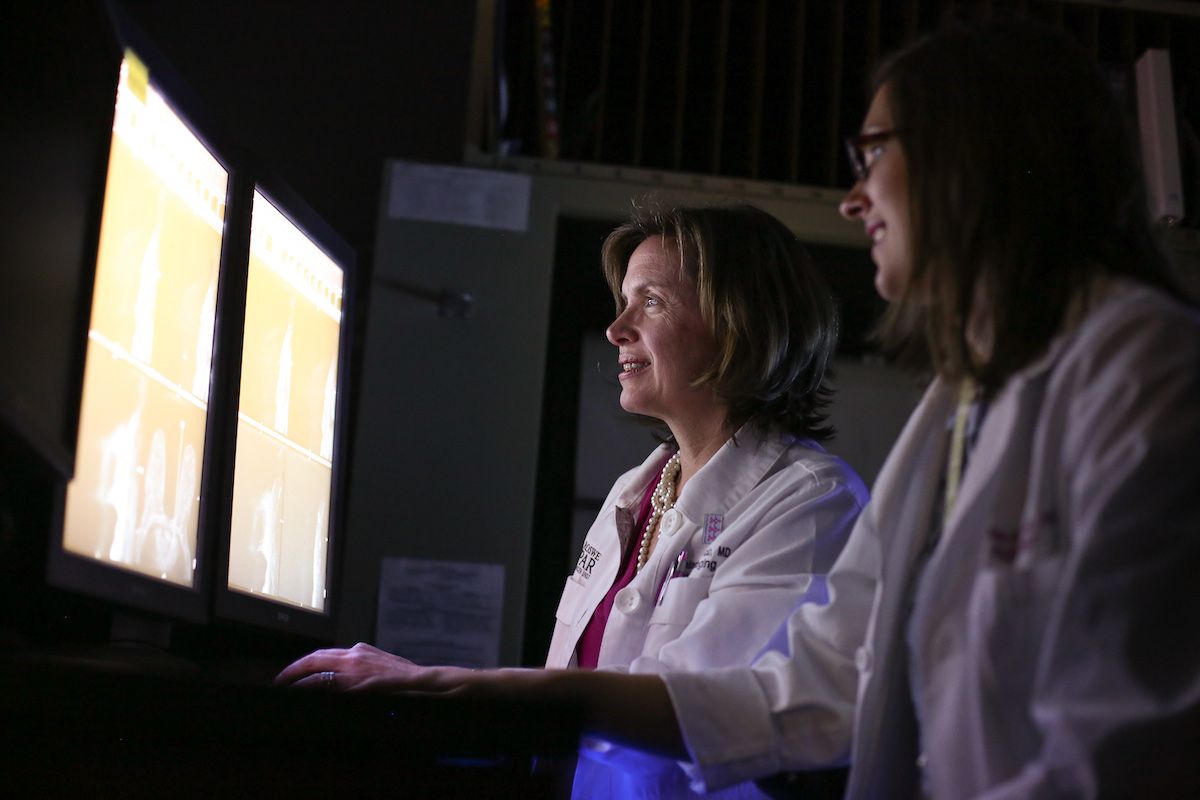Thanks to widespread breast cancer screening through use of mammography (X-ray of the breast), many breast cancers are found at an early stage and long before they would have caused any warning symptoms. Routine mammography saves lives, reducing a woman’s risk of dying from breast cancer by about 30 to 50%.
Next steps after an abnormal mammogram
If your mammogram or physician’s exam suggests an abnormality, or if you have symptoms (such as a lump) you may have one or more of these follow-up tests to rule out or confirm the presence of cancer:
- Diagnostic mammography: This type of mammogram takes x-rays of the breast from additional viewpoints and can focus more closely on the area of concern.
- Ultrasound exam: Ultrasound, which uses sound waves to create a picture of the inside the breast, can determine whether a lump is a benign cyst or a solid mass, and can guide needle biopsy. (Women younger than age 30 who have a palpable lump will likely have an ultrasound first.)
- Magnetic resonance imaging (MRI): Uses radio waves and a powerful magnet to create a picture of the breasts.
- Breast biopsy: Taking samples of the suspicious tissue to examine under a microscope can be done in one of these ways:
- Fine needle aspiration: a thin needle extracts tissue or fluid (preferred option)
- Hollow core needle biopsy: a wide needle extracts tissue sample
- Excisional biopsy: surgery to remove the entire lump of tissue
It is almost always preferred to have a needle biopsy before any surgery is done – and needle biopsy can be done in most women.
Preparing for your breast biopsy
Watch Dr. Ermelinda Bonaccio explain the step by step process of three different types of breast biopsies you may undergo. From parking to check in, through the procedure and follow up care, these Patient Education videos aim to put your mind at ease.
MRI Guided Breast Biopsy
Ultrasound Guided Breast Biopsy
Mammography Guided Breast Biopsy
After a biopsy
If your biopsy is negative (shows no sign of cancer), you may resume your normal mammography schedule.
If your biopsy is positive (shows signs of cancer), we understand how you feel and we are here for you. Take a deep breath and make an appointment with Roswell Park's Breast Oncology Team, who can help you understand your diagnosis and explain the treatment options best for you. Some women may need additional testing to learn more about the cancer such as its size and whether it has spread beyond the breast tissue. These tests may include:
- Chest x-ray
- Computerized tomography (CT)
- Positron Emission tomography (PET)
- Bone scan
It matters who diagnoses your breast cancer
At Roswell Park, breast cancer is detected, identified and diagnosed by a team of specialists who focus exclusively on beast cancer. From our diagnostic radiologists who read the imaging and perform the biopsy to the pathologists who analyze the abnormal cells to determine their exact type, grade and other unique characteristics, you can have confidence in the answers that result.
If you already have a diagnosis, we can arrange for our breast cancer experts to review your imaging and pathology, called a “secondary review.” In about 10% of cases we review, the diagnosis is changed, impacting your treatment options, decisions and your way forward.

